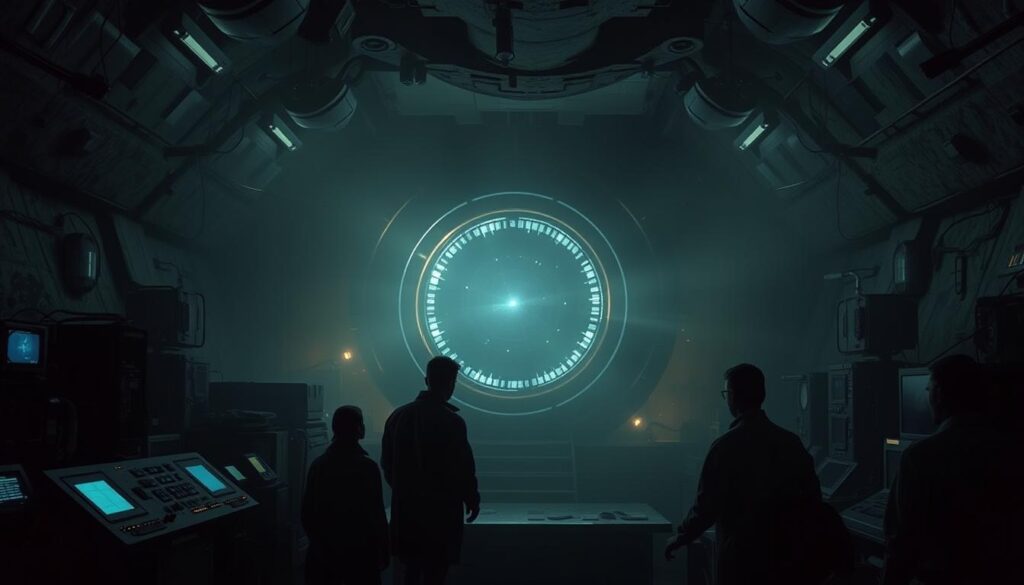Few names stand out in the study of psychic phenomena like Ingo Swann. Known as the father of modern remote viewing, his work shaped government programs and scientific research. His experiments, like the famous 1973 Jupiter observation, even caught NASA’s attention.
Beyond his psychic research, Swann had a creative side. His art gained recognition, with ties to the American Visionary Art Museum. His theories, including the “Dead Moon Dictum,” sparked debates about lunar mysteries.
Through books and studies, he left a lasting mark on parapsychology. His blend of science and intuition continues to inspire researchers today.
Key Takeaways
- Credited as the founder of modern remote viewing techniques
- Played a key role in the CIA’s Stargate Project
- Conducted groundbreaking 1973 Jupiter experiment
- Developed controversial theories about lunar anomalies
- Blended scientific research with artistic expression
Who Was Ingo Swann?
A Colorado-born visionary, this researcher reshaped psychic studies with groundbreaking work. Born in Telluride in 1933, he reported out-of-body experiences during a childhood tonsil surgery—an early hint of his future in psychic phenomena.

Before his CIA collaborations, he thrived as a New York artist. His paintings gained acclaim, but his fascination with the unseen world steered him toward research. By the 1970s, he was developing coordinate remote viewing protocols at Stanford Research Institute.
Scientology’s “exteriorization” practices influenced his methods. He believed consciousness could exist beyond the physical body—a theory he tested in labs and documented in his 1998 autobiography.
Career Timeline
| Year | Milestone |
|---|---|
| 1972 | Magnetometer PK tests |
| 1973 | Jupiter remote viewing experiment |
| 1998 | Published Penetration autobiography |
His legacy blends science, art, and the unexplored corners of the mind. Few dedicated their time so equally to creativity and psychic exploration.
The Birth of Remote Viewing
During the Cold War, an unusual battlefield emerged—one fought with minds instead of missiles. The U.S. government, alarmed by Soviet psychic espionage programs, greenlit a covert initiative to harness remote viewing for intelligence gathering. By 1972, the CIA had partnered with scientists at Stanford Research Institute (SRI) to test its potential.

The Stargate Project
With a $20 million budget, the Stargate Project operated from 1970 to 1995. Physicists Russell Targ and Harold Puthoff led early experiments, proving subjects could describe distant locations using only coordinates. The program later moved to Fort Meade, Maryland, where military personnel like Joseph McMoneagle completed 150+ missions.
Key successes included locating Soviet submarines and providing intel during hostage crises.
“The data was often shockingly accurate,” admitted a declassified CIA report.
Despite its 1995 declassification, the program sparked debate. Critics dismissed it as pseudoscience, while supporters pointed to declassified successes. The Stargate Project remains a controversial chapter in government-backed psychic research.
Ingo Swann’s Most Famous Experiments
In 1973, a bold prediction about Jupiter stunned the scientific community. Using remote viewing, a psychic researcher described the planet’s atmosphere in detail—years before NASA probes could confirm it.

Remote Viewing Jupiter
During an April 1973 session, the researcher reported ammonia crystal clouds and a liquid core. At the time, telescopes couldn’t verify these claims. But in 1979, Voyager 1 photos revealed banded atmospheric structures.
The final validation came in 1995. NASA’s Galileo probe confirmed ammonia-rich layers, matching the psychic observations made decades earlier.
The Moon and the “Dead Moon Dictum”
Later experiments targeted the Moon, specifically its hidden far side. Coordinate-based sessions hinted at unnatural features on the surface, like structures in the Mare Crisium region.
These claims led to the controversial Dead Moon Dictum theory. It suggested space agencies withheld data about lunar anomalies. While unproven, the idea fueled debates about transparency in space exploration.
Ingo Swann’s Legacy in Psychic Research
Corporate spies and military strategists aren’t the only ones who’ve harnessed remote viewing’s potential. The pioneer’s work reshaped parapsychology, proving that *subtle human* perception could be studied scientifically. A 2001 EEG study showed occipital lobe activation during sessions—hinting at altered consciousness states.

Stanford Research Institute (SRI) reported 85% accuracy in trained students. Today, labs like the University of Virginia’s DOPS continue exploring these biomind superpowers. From real estate scouting to mineral discovery, businesses quietly apply these techniques.
Key Milestones
| Year | Breakthrough |
|---|---|
| 2001 | EEG confirms brainwave shifts during RV |
| 2007 | DIA revives protocols for counterterrorism |
| Present | Monroe Institute’s Gateway Process training |
Critics dismiss it as pseudoscience, yet declassified files reveal military successes. The debate fuels parapsychology’s push for mainstream acceptance. As research evolves, so does our understanding of human consciousness.
Ingo Swann’s Books and Publications
Printed works offer another window into this psychic pioneer’s mind. His books span UFO encounters, psychic training, and declassified experiments—blending science with the unexplained.

Must-Read Works
- Penetration (1998): This Amazon bestseller details a bizarre ET encounter in a supermarket and claims of lunar bases. It fuels the question extraterrestrial human debate with firsthand accounts.
- Everybody’s Guide to Natural ESP: A practical manual for honing psychic development, from telepathy to remote viewing.
- To Kiss Earth Goodbye: Chronicles SRI’s lab experiments, including the Jupiter probe.
- Your Nostradamus Factor: Explores precognition techniques for everyday use.
Limited-edition print releases through Visionary Press showcase his abstract art. These collectibles merge his artistic flair with esoteric themes.
Through his writings, Swann invited readers to explore the fringes of human perception—one page at a time.
Related Products and Resources
Exploring psychic abilities doesn’t require a lab—many tools and online courses make it easy to start from home. Whether you’re a beginner or seasoned practitioner, these resources simplify remote viewing techniques with guided practice.

Remote Viewing Kits and Tools
Top-rated remote viewing kits include everything from coordinate databases to biofeedback devices. Here’s a comparison of popular options:
| Product | Features | Price |
|---|---|---|
| Farsight CRV Training Kit | CIA-approved protocols, 10+ exercises | $297 |
| Monroe Hemi-Sync Gateway | Audio-guided sessions, card on Amazon | $149 |
| Biomind Superpowers Stack | Nootropics for focus, safety alerts included | $89 |
Online Courses and Workshops
Interactive online courses break down complex techniques into steps made easy. Highlights include:
- Mindvalley’s Masterclass: Live coaching with declassified methods.
- SRI’s Coordinate Database: 1,000+ real-world targets for practice.
- Gateway Voyage: Monroe Institute’s 7-day immersive program.
Most programs offer money-back guarantees, making experimentation risk-free. Start small, and let curiosity guide your journey.
Conclusion
From predicting Jupiter’s ammonia clouds to uncovering lunar mysteries, remote viewing challenged scientific limits. Today, declassified programs reveal its United States military applications—proving its value beyond theory.
Ready to explore further? Online communities offer training and shared experiences. Whether you’re curious or committed, the tools are within reach.
The real frontier isn’t space—it’s human consciousness. Dive deeper with books like Penetration or beginner-friendly courses. The journey starts with a single thought.

